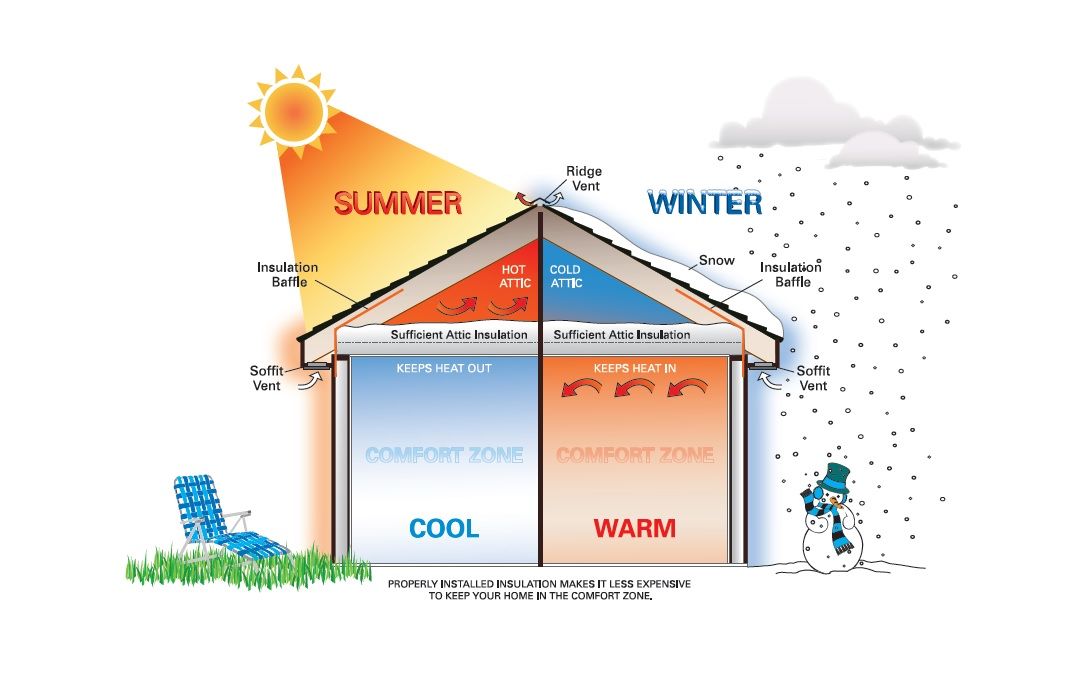Proper insulation is an essential aspect of creating a comfortable and energy-efficient home. By insulating your home, you can significantly reduce heat loss during winter and heat gain during summer, leading to lower energy bills. Besides, a well-insulated home offers a comfortable living environment by maintaining consistent indoor temperatures and minimizing drafts. In this article, we will explore the benefits of home insulation and discuss various insulation materials and techniques.
Benefits of Home Insulation
Insulating your home offers numerous benefits, from improved energy efficiency to enhanced comfort. Here are a few key advantages:
1. Energy Efficiency
One of the primary benefits of home insulation is improved energy efficiency. Insulation acts as a thermal barrier, reducing the transfer of heat between your home and the external environment. This means that during hot summers, the insulation helps to keep the cool air inside while preventing the heat from entering. Similarly, in winter, insulation prevents heat loss, keeping your home warmer and reducing the amount of energy required to maintain a comfortable temperature.
2. Cost Savings
When your home is well-insulated, you will notice significant cost savings on your energy bills. By reducing heat transfer, your heating and cooling systems do not need to work as hard, resulting in lower energy consumption. Over time, these savings can add up and make a noticeable difference in your monthly expenses.
3. Comfortable Indoor Environment
Poor insulation can result in uneven temperatures throughout your home, with cold spots and drafts. However, by insulating your walls, attic, and floors, you can create a more comfortable living environment. Insulation helps maintain a consistent temperature in all rooms of your home, ensuring that you and your family can enjoy a comfortable atmosphere, regardless of the season.
4. Noise Reduction
Insulation not only helps with thermal barriers but also acts as a sound absorber. If you live in a noisy neighborhood or near a busy road, proper insulation can significantly reduce external noise, ensuring a quieter and more peaceful living space.
Insulation Materials
There are various insulation materials available on the market, each with its own advantages and disadvantages. Here are a few commonly used options:
1. Fiberglass Insulation
Fiberglass insulation is one of the most popular and cost-effective choices. It is made from tiny glass fibers and is available in the form of batts, rolls, or loose-fill. Fiberglass insulation is fire-resistant, easy to install, and offers excellent thermal performance when properly installed.
2. Cellulose Insulation
Cellulose insulation is created from recycled paper products and treated with fire-retardant chemicals. It is an eco-friendly choice and provides good thermal and sound insulation. Cellulose insulation is typically blown into attics and wall cavities.
3. Spray Foam Insulation
Spray foam insulation is a versatile option that expands after application, filling in gaps and crevices. It provides excellent thermal insulation and helps reduce air leakage. However, it is typically more expensive than other materials and requires professional installation.
4. Reflective Insulation
Reflective insulation is made from aluminum foil and reduces heat transfer by reflecting radiant heat. It is often used in attics, roofs, and walls to keep your home cool during hot summers.
Insulation Techniques
When it comes to insulating your home, there are different techniques to consider. The appropriate method will depend on your specific needs and the areas you want to insulate. Here are a few common insulation techniques:
1. Attic Insulation
Insulating your attic is a crucial step in preventing heat loss. This can be achieved through the installation of batts, rolls, or blown-in insulation materials. Proper attic insulation helps maintain a consistent temperature throughout your home and prevents warm air from escaping through the roof.
2. Wall Insulation
Insulating your walls can significantly improve energy efficiency and comfort. Depending on the construction of your home, you can either opt for internal wall insulation or external wall insulation. Internal wall insulation involves attaching insulation boards to the inside of existing walls, while external wall insulation requires adding a layer of insulation to the outside walls.
3. Floor Insulation
Insulating your floors helps eliminate cold feet and reduces heat loss through the ground. This is particularly important in homes with timber or suspended floors. Different insulation materials can be used, such as insulation boards or batts inserted between floor joists.
Conclusion
Home insulation plays a crucial role in enhancing both the efficiency and comfort of your living space. By investing in quality insulation materials and employing the appropriate insulation techniques, you can create a thermally efficient home that promotes energy savings and provides a comfortable indoor environment year-round. Whether you choose fiberglass, cellulose, spray foam, or reflective insulation, pay attention to properly insulating your attic, walls, and floors. Remember, a well-insulated home not only reduces energy consumption but also contributes to a more sustainable future.


